“Is it salsa time,” asked the man in the produce section, gesturing toward my bulging bag of green Hatch chiles. “You know you can freeze them,” I replied. “Really?” “Sure. You roast them, peel them and then freeze them in bags. That way you have them all year long.” “Huh,” said the man thinking this over. “Good to know.”
That exchange happened in the produce section of my local While Foods this week. I was the crazy lady with the eight-pound bag of Hatch chiles weighing down my basket. Eight pounds sounds like a lot. But keep in mind: I had already purchased another huge bag two days earlier.
As people who live in the southwest know, August and September is Hatch chile season. These long, skinny green chiles, which come from Hatch, New Mexico, are prized for their perfect balance of flavor and heat. Picked before they have turned red, green Hatch chiles can actually be any one of several varieties like Big Jim, Long Green or Española. Like Champagne or Roquefort, what makes a Hatch chile a Hatch chile is where it comes from. Green chiles are a staple of New Mexican cuisine, as anyone who has ever been to New Mexico and answered the question “red or green” abut their food order can tell you.
Hatch chiles have a short season – leave them on the vine a few more months and they turn red – which means that you should buy them in large quantities while you can and preserve them. In the southwest, grocery stores set up massive roasting operations in their parking lots and towns hold roasting festivals during Hatch chile season so people can buy large quantities of roasted peppers to stash in their freezers. (Because of the tough outer skin of the Hatch chile — remember these are chiles that have not yet fully ripened — roasting and peeling prior to eating is a must.)
In the rest of the country, you can still find Hatch chiles when they are in season, but you will probably have to take care of roasting them yourself. As I mentioned, I found them at my local Whole Foods for $1.99 a pound. You can also buy them fresh, frozen or in dried form. Go ahead and stock up because this is a home preserving project that everyone can do – no special expertise needed.
When shopping for Hatch chiles, select firm peppers, not mushy ones, without any blemishes or bruises. The curly ones have a lot of charm but the straight ones are easier to roast. Skinny ones are harder to peel than plump ones – the flesh seems to stick the peel more.
You can roast Hatch chiles on the grill or stovetop or in the oven. Whatever method you use, you want to char the peppers on all sides, turning them as necessary to achieve this effect. Grilling may well be the quickest method. I roasted my Hatch chiles in the oven because my husband was not available to grill them and I do not touch his grill. I think oven-roasting is more efficient than blistering the chiles in a cast-iron skillet. This is my method:
- Line a baking sheet with foil and arrange the chiles on the foil in a single layer.
- Preheat the broiler and place an oven rack as close to the heating element as possible. For me, this was the third setting from the top.
- Place the baking sheet under the broiler.
- Roast the peppers for 7 to 10 minutes until well-charred.
- Turn the peppers over and roast until the second side is charred. This will usually take less time than the first side did.
- Remove the charred peppers from the heat and place them in a large glass bowl or heat-safe plastic container. Cover the container and allow the peppers to steam for 10 to 15 minutes.
- Peel the skin off the peppers. They should slide off easily but you can use a knife on any stubborn bits. Remove the tops and seeds. (I find this task easiest to do with bare hands, but you are working with hot peppers so wearing rubber gloves can be a good idea. If you chose not to wear gloves, avoid touching your eyes or any mucous membranes.) If the peppers kind of fall apart while you are doing this, do not be concerned. You will likely chop them or cut them into strips before cooking anyway.
- Place the peeled peppers in plastic freezer bags, squeeze out the remaining air in the bags, label and store in the freezer.
There are a million way to use your stash of Hatch chiles. You can use them in all your Tex-Mex and southwestern dishes from quesadillas to enchiladas. Hatch chiles are a perfect match with cheese and eggs and a great addition to soups and stews. Or use them in baked goods, like green chile cheddar cornbread. Here is a helpful Hatch chile recipe round-up to get you started.
Promise me that you will go buy some Hatch chiles, okay?
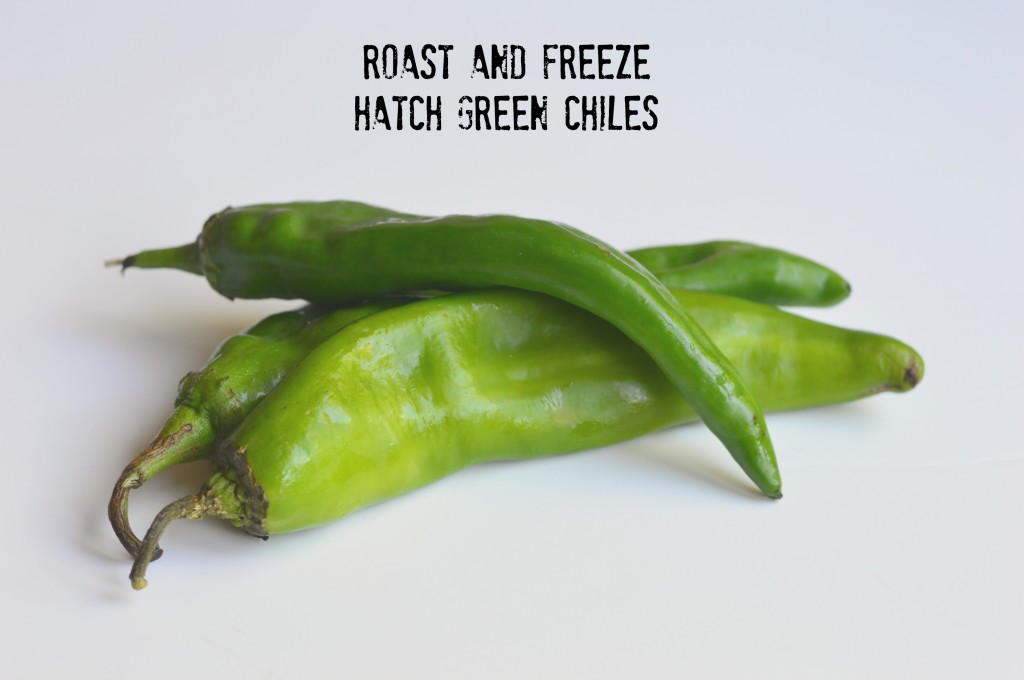
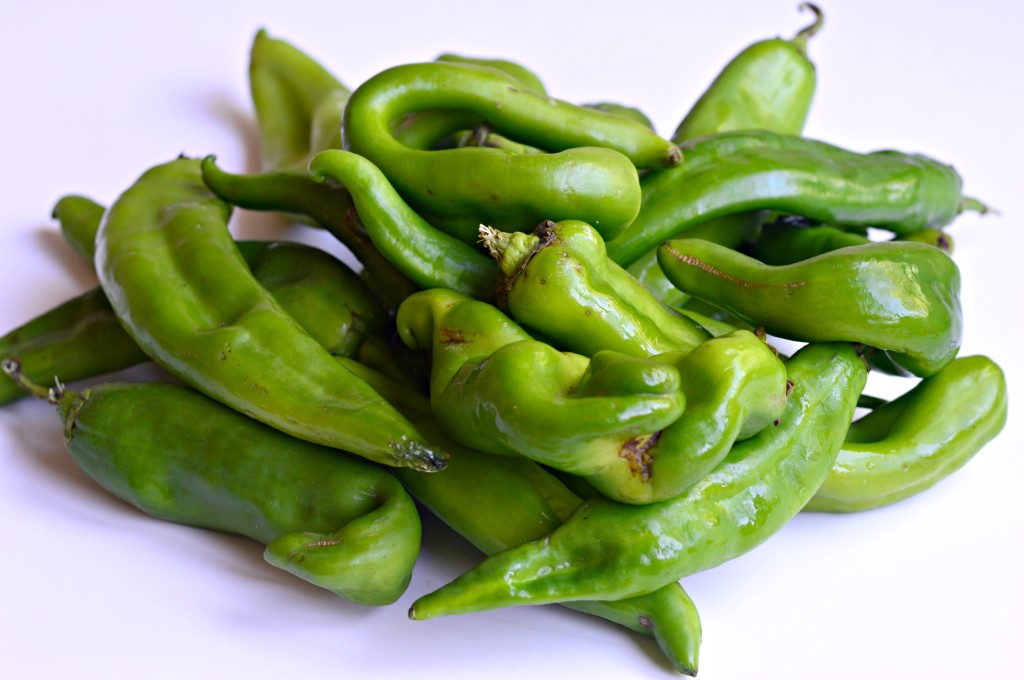
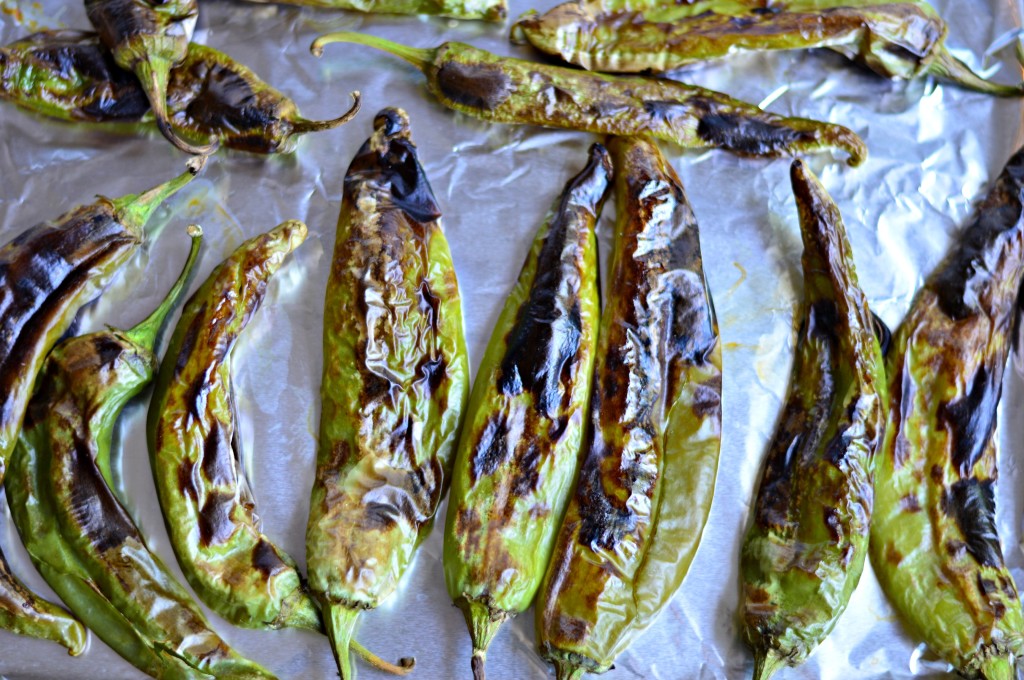
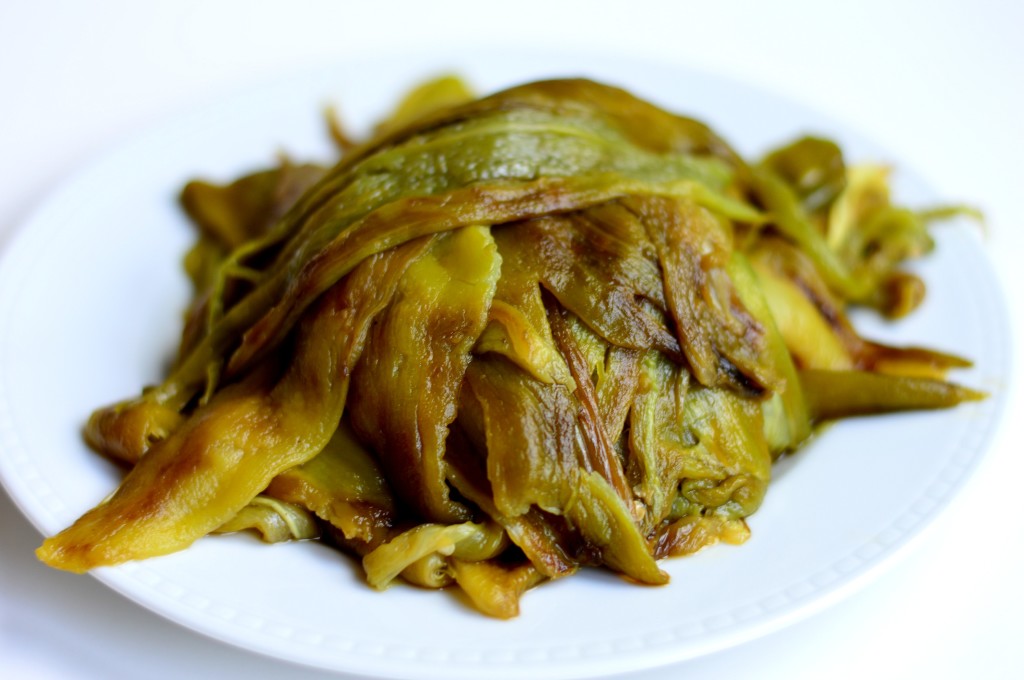
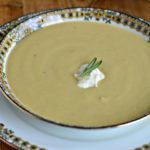





[…] Prepping and preserving hatch chiles. […]